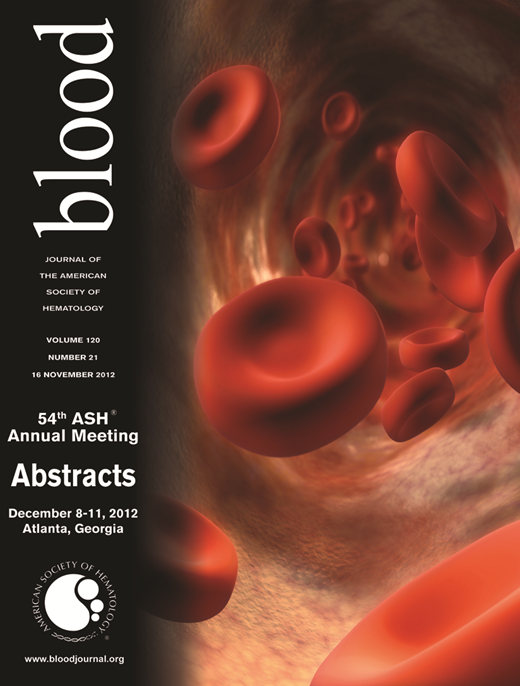Abstract
Abstract 3815
The activity of DNA methyltransferase inhibitor (DNMTI) monotherapy is suboptimal for most patients (pts) with myelodysplastic syndromes (MDS) and acute myelogenous leukemia (AML). DNMTI combinations studied to date have not convincingly produced higher response rates compared to DNMTI monotherapy, although time to response appears to be improved in some studies. We combined decitabine (DAC) with tretinoin (ATRA), an RAR ligand which can recruit histone acetyltransferases to gene regulatory regions, as a means to upregulate gene expression, and to induce apoptosis or differentiation, as is seen in in vitro studies of non-M3 AML. Our previous phase 1 study established 65 mg/m2/day of ATRA as the MTD (headache was DLT at 85 mg/m2/d) when given on days 10–19 following standard dose decitabine (20 mg/m2/d), given on days 1–5 of a 28-day cycle (Klimek VM, et al. Leuk Res, 2011;35:S70-S).
MDS pts with any FAB or WHO subtype were enrolled if they had an IPSS score ≥ 0.5, were ineligible for allogeneic stem cell transplant (AlloSCT) at study entry, and had adequate hepatic and renal function. Prior DAC or 5-azacytidine (5-aza) responders who then progressed off treatment, and pts whose MDS progressed on 5-aza were eligible. Pts received up to 10 cycles of DAC (given on days 1–5) and tretinoin (65 mg/m2/d on days 10–19 of a 28-day cycle), allowing for delays due to infection or to allow count recovery as deemed necessary by the treating physician. Those with an ongoing response after 10 cycles continued DAC alone off-study. The primary endpoint is efficacy, assessed after even-numbered cycles using the 2006 Modified International Working Group MDS response criteria. Kaplan-Meier methodology was used to estimate duration of best response due to the censoring for patients undergoing AlloSCT.
36 eligible pts (27M, 9F; median age 66, range 45–84 yrs) were enrolled in the phase 2 cohort as of 6/2012. FAB/WHO subtypes included: RA/RCMD, n=3 (8%); RARS/RCMD-RARS, n=1 (3%); RAEB/RAEB-1 & 2, n= 24 (67%); RAEBt/AML, n= 6 (17%); CMML/CMML-1, n=2 (6%). IPSS risk categories included: Int-1, n=5 (14%); Int-2, n=16 (44%); High Risk, n=11 (31%), and pts with ≥ Int-1 (n=3) or ≥ Int-2 (n=1) risk disease who could not be definitively classified using the IPSS. Most pts (n=20) had IPSS poor risk cytogenetics (CG), 11 had IPSS good risk CG (all with normal karyotype), 3 had intermediate risk CG, and CG results were unknown in 2 pts. 15/36 (42%) had therapy-related disease (t-MDS/AML), all with IPSS poor risk CG and either IPSS Int-2 (n=9) or High Risk (n=6) disease. Marrow blasts were ≥ 5% in 26/36 pts: (5–10%, n=13; 11–20%, n=13; 21–30%, n=6). Prior MDS therapy included lenalidomide (n=2), thalidomide (n=1), 5-aza (n=3), DAC (n=1), and lintuzumab (n=1). Pts received a median of 4 cycles of therapy (range, 1–10), and started therapy 0.6–180 months (median, 1.42 months) from the time of diagnosis. Two pts were classified as treatment failures since they died during the first cycle of therapy. One pt with CMML-1 at baseline progressed to AML during the screening period, and was deemed ineligible. Two pts on study have not yet had a full response assessment. Best responses in the evaluable intent to treat cohort (n=33) include: CR, n=7 (21%); PR, n=1 (3%); mCR, n=3 (9%); mCR+HI, n=3 (9 %); HI alone, n=3 (9 %); Stable disease, n=10 (30%); Disease progression, n= 3 (9%). The composite CR rate (CR+mCR±HI) was 39% (13/33), and the overall response rate (CR+PR+mCR±HI+HI) is 51% (17/33). Median time from diagnosis to start of therapy for responders was 1.7 months (range, 0.8–180). The ORR for the 13 t-MDS/AML pts was 46% (6/13), including 5 pts with monosomy 17 and/or p53 loss by FISH. The median time to initial response and best response is 1.1 months and 2.3 months, respectively. The median response duration is 7.8 months, incorporating the 7 pts censored at the time they came off study to undergo AlloSCT.
DAC/ATRA is active in IPSS Int-2 and High Risk MDS and in t-MDS/AML, which is characterized by poor risk cytogenetics and an increased frequency of p53 or chromosome 17p loss. Although our interim ORR appears similar to DAC and 5-aza monotherapy trials, our results were achieved in a higher risk cohort, and the CR rate is equal to or greater than some earlier monotherapy studies with a shorter median time to response. Ongoing and planned correlative studies may define pre-treatment biomarkers for response.
Off Label Use: Tretinoin.
Author notes
Asterisk with author names denotes non-ASH members.

